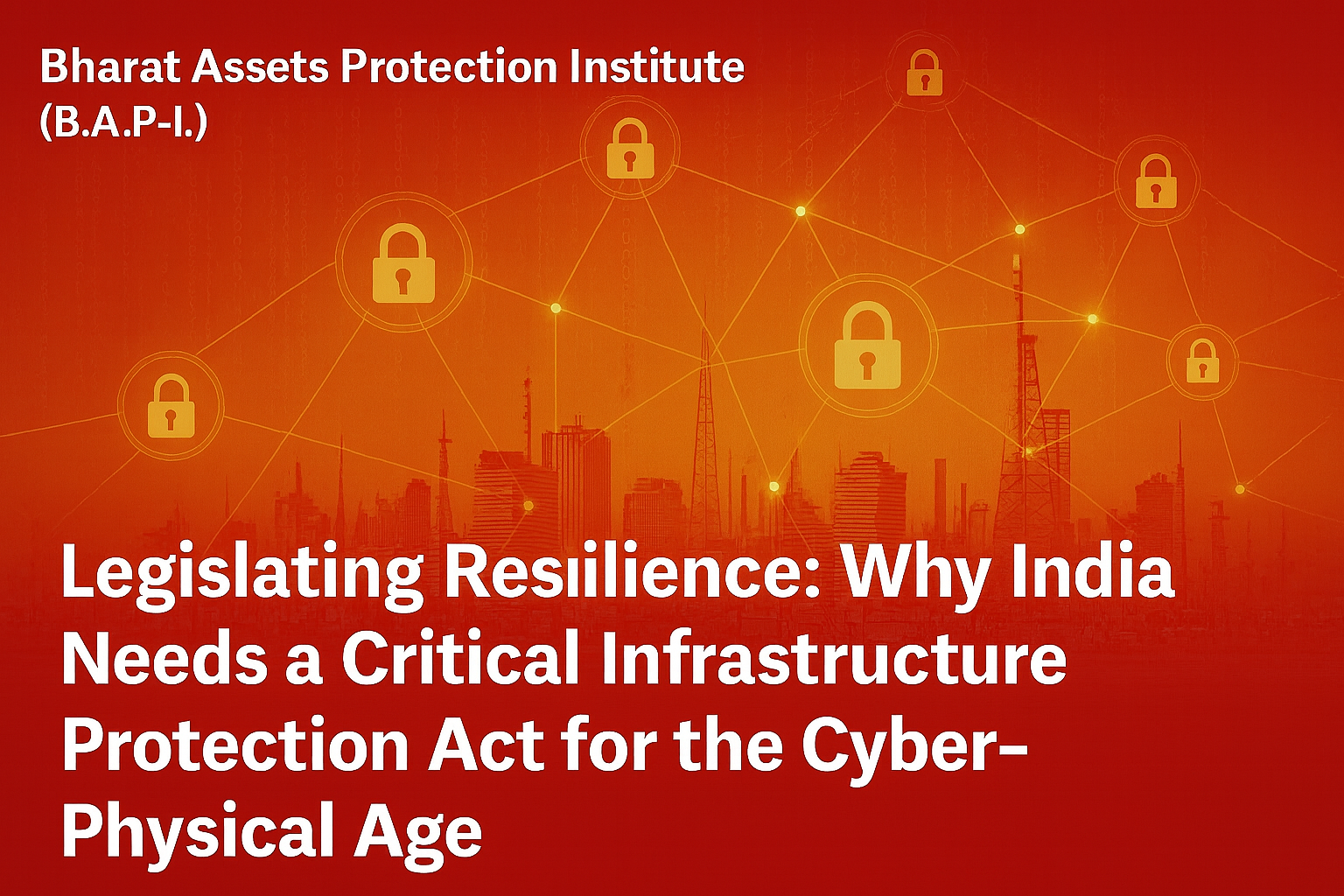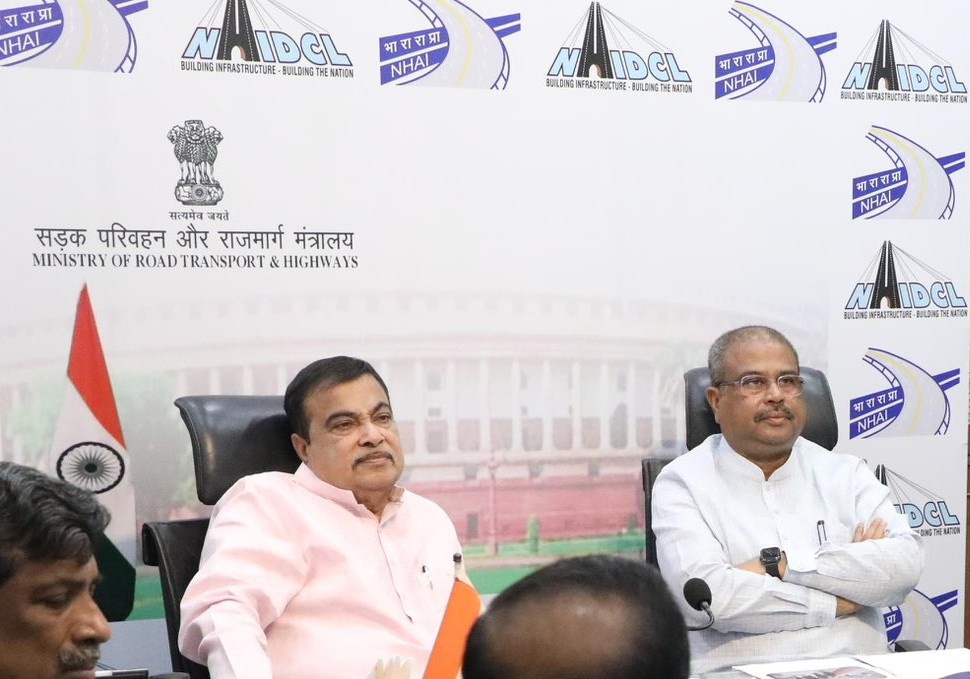Ensuring the integrity of a nation’s internal landscape—across its physical, cyber, and socio-institutional domains—requires a continually evolving, layered security architecture. At the Bharat Assets Protection Institute for Critical Infrastructure; Strategic Manufacturing and Supplychain Resilience, the research theme on Internal Security Management is designed to respond to the expanding threat surface, emerging technologies, and hybridised security challenges. Internal security today extends well beyond traditional policing or territorial protection—it requires system-wide coordination between technology infrastructure, institutional frameworks, and community-level resilience mechanisms, underpinned by actionable intelligence and interoperable platforms.
This research stream takes a cross-sectoral view, where the protection of critical infrastructure, urban networks, industrial corridors, and public spaces is studied alongside forensic technologies, crowd control mechanisms, and digital risk management systems. As hybrid threats continue to rise—ranging from state-sponsored cyber intrusions to coordinated attacks on physical installations—there is a growing urgency for integrated surveillance networks, cyber-physical protection systems, and secure communication infrastructure that are capable of real-time response and future-oriented threat anticipation.
The scope of this research also includes the evolving ecosystem of private security players, internal forensic analysis, and civil defence strategies, with a focused commitment to building redundancy frameworks and fail-safe systems that can operate in the face of large-scale disruptions—be it natural, human-made, or techno-centric. Moreover, smart traffic systems, industrial security protocols, and event safety blueprints form an integral part of the research, particularly as cities grow denser and public events become increasingly complex logistical exercises.
Overview of the Research Focus on Internal Security Management
The Internal Security Management research vertical at the Institute recognises that internal stability is a dynamic and layered challenge that can only be met through a technologically enabled and institutionally coordinated response. The research is built on the convergence of internal security technologies and sector-specific protection mechanisms, creating a space to examine real-time and predictive solutions for urban management, industrial operations, and national infrastructure governance.
One of the core research themes is Internal Security Technologies and Applications, which focuses on the adoption of cutting-edge tools including AI-driven surveillance systems, smart command-and-control centres, sensor-based threat detection, and automated forensic tools that can support preemptive risk mitigation. Equally important is the study of Advanced Traffic Management, where urban congestion, threat monitoring, and emergency logistics are integrated into a single operational flow—particularly during high-risk or emergency situations.
The Best Practices in Industrial Safety and Security form another cornerstone of this research, where safety protocols, workplace incident forensics, and plant-site surveillance systems are critically examined in high-risk sectors such as petrochemicals, energy production, and defence manufacturing. These are complemented by a detailed inquiry into Forensic Technologies and Applications, enabling legal and policy institutions to build robust chains of digital and material evidence in internal security breach scenarios.
Public safety during large-scale events—religious gatherings, political rallies, or national celebrations—is a recurring challenge. Hence, Event Resilience and Crowd Management becomes essential for modelling movement patterns, emergency exits, communication protocols, and crowd-control strategies under pressure. This is closely linked with an in-depth analysis of Private Security Players and Security Service Solutions, where the emerging role of certified private actors in infrastructure protection is critically evaluated, including their integration into national response networks.
Another focal area includes National Critical Infrastructure Protection Systems (CIPS), where interconnected critical assets—transport, energy, telecom, water, and logistics—require dedicated protection frameworks. This includes simulations for infrastructure redundancy, enabling alternate operating modes during attack or failure. Within the broader ecosystem of threat analysis, the tracking of Hybrid Threats, including cyber-kinetic attacks, misinformation warfare, and sub-national disruption efforts, demands the development of advanced monitoring and risk-response systems, anchored in national-level threat intelligence platforms.
Research also spans Civil Defence initiatives and the deployment of Infrastructure Redundancy Plans, integrating structural engineering and social risk mitigation. Coupled with this is the development of Secure Communication & Surveillance Infrastructure, covering secure radio, satellite-backed communication systems, and mobile-command vehicle technology. Last but not least, the Cybersecurity Infrastructure & Forensic Analytics segment delves into intrusion detection systems, encrypted data protection, and response frameworks for institutional cyber breach scenarios.
Inviting Researchers, Security Practitioners, and Technology
Experts
The Bharat Assets Protection Institute extends an open research invitation to individuals and institutions working at the interface of internal security, risk management, cyber-physical systems, and infrastructure protection. Contributions are welcomed across multiple domains:
- Proposals for next-generation internal surveillance systems, AI-guided threat detection, and command centre design.
- Policy and operational strategies in urban traffic control, especially those integrating emergency movement protocols with civilian safety mandates.
- Documentation and evaluation of industrial safety practices, particularly in hazardous manufacturing environments.
- Application-based studies in forensic technology, including digital forensics, chain-of-evidence integrity, and investigative AI systems.
- Research on crowd behavioural analytics, event management tools, and emergency evacuation infrastructure for densely packed environments.
- Frameworks for onboarding private security service providers into public safety mandates, including legal and regulatory dimensions.
- System architecture for hybrid threat intelligence platforms, including proactive misinformation detection and network-based subversion models.
- Engineering strategies and simulations for infrastructure redundancy, particularly in civil defence response planning.
- Interoperable models for secure communication, emergency network re-routing, and surveillance data encryption.
- Application of cyber-forensics, real-time threat analytics, and institutional breach response mechanisms.
Encouraging Interdisciplinary Contributions
This research vertical is grounded in interdisciplinary logic, welcoming scholars, security experts, engineers, forensic scientists, public policy analysts, and legal professionals to contribute. Academic engagement is expected to blend quantitative simulations, technical toolkits, security regulation audits, and cross-sectoral risk matrices.
Contributions will be synthesised into sectoral handbooks, governance white papers, and national resilience playbooks, aiming to influence both on-ground implementation and national-level policymaking. The Institute invites research that not only theorises but also tests, models, and validates internal security systems in real-world scenarios.
The agenda of internal security management at the Bharat Assets Protection Institute is not just about defence—it is about embedding operational integrity, response reliability, and community confidence into the fabric of India’s national infrastructure.








